Vinca minor
A garden plant that is becoming naturalized
Vinca minor common periwinkle
This is an early spring flower that blooms not only in Pennsylvania but also all throughout the eastern and central United States. It is sometimes mistaken for a species of Phlox that blooms about the same time, but is not related. The common periwinkle is a member of the dogbane family.
The common periwinkle is an introduced garden plant that has frequently escaped cultivation. It is native to central and southern Europe and southwest Asia and is found as far as southern Russia. It is now widespread in eastern North America and in many locations further west. The U.S.D.A documents it as introduced in most Pennsylvania counties except for a few in the north-central part of the state.
It can grow 6 to 8 inches tall, but is a non-climbing, creeping and spreading plant that can form large mats and is popular as a ground cover. The shrub-like stems will generate roots where they are close to the ground. The long and flexible stems have been used to make wreaths.
The flowers have asymmetric purplish blue petals that look like a pinwheel. There is a star outlined in the center. The flowers are about one inch in diameter and the petals fuse at the base to form a funnel. The leaves are leathery, glossy and evergreen. They are up to 1.5 inches long. Depending on location the plant can bloom from March until May.
As an escapee, it is often found growing along woodland borders, on roadsides, at abandoned sites and in cemeteries. In some areas it can be considered undesirable, especially when it grows aggressively and chokes out other plants. It is very difficult to eradicate, as the waxy leaves do not absorb most herbicides. It is also deer tolerant.
The common periwinkle is also known by the common names creeping myrtle, though this is a misleading name. It is also known as the lesser or dwarf periwinkle, to distinguish it from the related Vinca major, a larger and hairier species.
Habitat & Range
Cultivated and occasionally naturalized in woods, fields & roadsides.
Present throughout the state.
Wetland code: Not classified
Phenology
Flowers April through June.
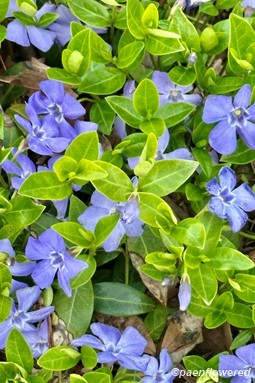
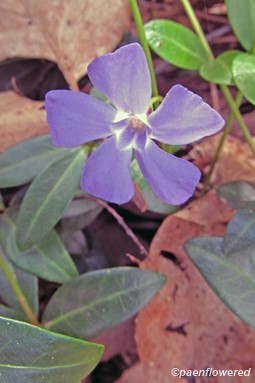
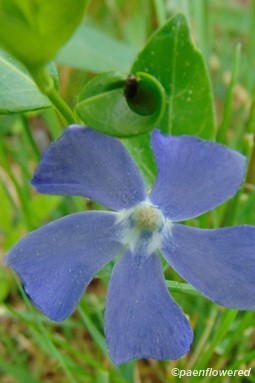
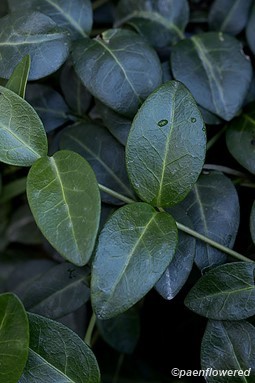
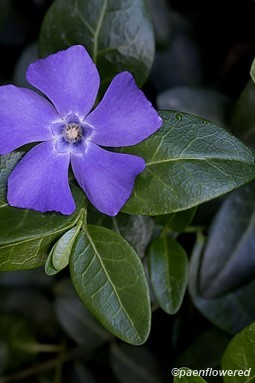

Comments
Have you spotted this plant in your area? We'd love to hear about your experience! Share your comments or questions about the plant below. Comments are moderated before posting.